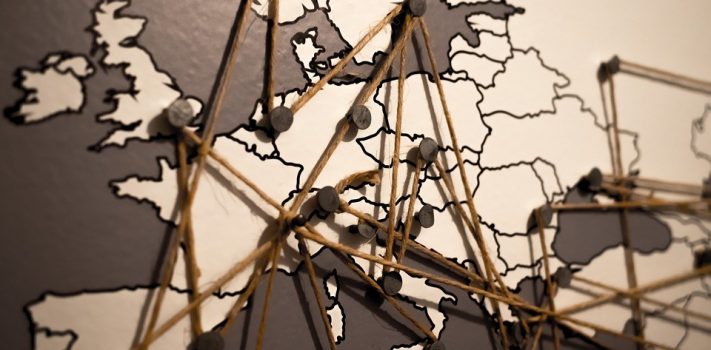Email a copy of 'Guest Article: Maps and Pins Won’t Save You, Part 1, by Kit Perez' to a friend
9 Comments
- Ad Civil Defense ManualThe Civil Defense Manual... The A to Z of Survival. Look what in it... https://civildefensemanual.com/whats-in-the-civil-defense-manual/
- Ad Barter and Sell at Simcour Trading PostA new site for individuals to barter and sell items of interest to other like-minded individuals


I like the topic but I disagree (respectfully) with many (not all) of the notions in the first part of this article. I think the author forgets that there is strategic intelligence and tactical intelligence. Mostly what she is talking about is tactical or actionable intelligence. The author uses the example of of a fire department but what we all need to know that while a fire department operates in the realm of tactical intelligence there is someone in that community looking at the bigger picture or strategic intelligence, that being the emergency operations center. If you are interested in the difference between tactical and strategic Intel go over to the “Forward Observer” website and look for an article entitled “Tactical, Operational, and Strategic Intelligence.” Don’t wait to discover a threat when it’s knocking on your AO. I am looking forward to the rest of the article to see if the bigger picture is addressed.
Thanks for clarifying the difference between information and intelligence. And linking up why you gather up this stuff in the first place to what are you going to do with it next.
Sometimes having an under-active imagination is an asset. Keep it real. Thanks Kit!
Kit’s point are well taken, but Area of Interest is the circle or sphere used to enclose where you gather information from.
In a sphere, you consider also anything undergound such as earthquake potential, and overhead with continuous coverage satellites when everything is photographed in fine detail continuously.
Intelligence isn’t just about your team, it’s also about knowing what capabilities of all other forces in the sphere: Anitfa, FBI, Sheriff, security, NOAA, public utility repair teams, telecoms, road crews, first responders, private groups, etc., that could influence situational outcomes.
Weather effects on terrain in the A of Interest are important, as wind storms cut power, fall trees across our roads, high wind waves shut down key floating bridges infrequently, wet and snowy roads cause collisions which shut down mountain passes and floods shut down I-5 at Chehalis, mud slides frequently shut down the passenger rail service in the Puget region, and not infrequently close off the sole highway resupply routes. All these are impacts which should be assessed and monitored, as they impact both your AO and Area of Influence, so are key information items.
God Bless
The term AO is typically shorthand for Area of Responsibility, which then makes the boundaries of a fire department or fire battalion or company within a department easier to understand.
Unless you plan to exercise control over a large swath of territory, like the State Guard or National Guard would, your AOR or AO is relatively small. Maybe just the local neighborhood. Your Area of Interest, OTOH, could be considerably larger, and might include neighboring towns and cities.
Always Out Front.
Thanks for posting this.
For some reason I can’t copy and paste them from her site.
But I can from here with no issues.
Their web site has DigiProve installed, “The Digiprove plugin will inhibit the common right-click and copy function available to users through their browsers, warn them about copying protected material, and send you an Email alert bearing the IP address of the user behind the copy attempt.”.
My AO is my line of sight. Not that I don’t want it to be larger or wouldn’t want to help my neighbors but I doubt I can do much outside if it, even with the whole team
Kit,
This is really a welcome and much needed look at AO.
Area of Responsibility (AOR), as referenced in comments above, is really irrelevant in the context of your excellent article, and the terms are not truly interchangeable. For example, the Tucson Sector of the Border Patrol extends from the AZ-NM state line, westward to the Yuma County line. No BP agent considers the entire sector to be their AOR. Much like your example of fire stations, BP agents work out of geographical areas that are much smaller in size. Thus, an agent assigned to the Three Points station may have an AOR that is 20X30 miles, versus several thousand square miles. For a BP agent, AO is really a tactical definition of an even smaller area where they routinely work. The key point of your article is that you have to know your AO and be able to respond to situations within that AO in a timely manner. If that turns out to be limited by your line of sight, so be it.